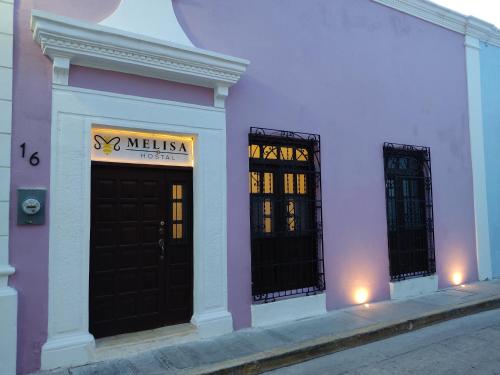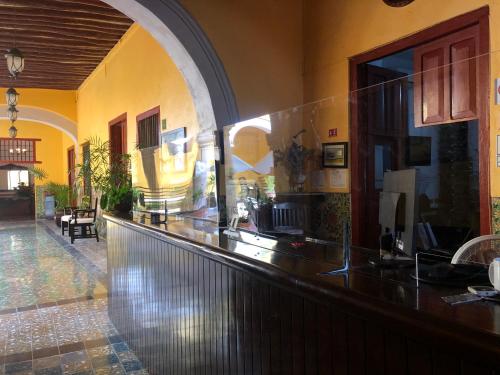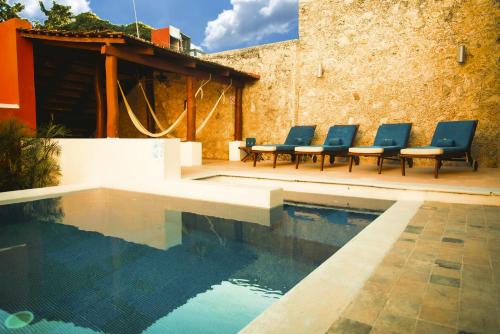Historic City of Campeche, Mexico
In February of 1663, the largest fleet of pirates that had ever been amassed sailed for Campeche on the Mexican coast.
Leading this unruly mass of criminals was the English sailor Christopher Myngs, notorious in the Caribbean for his bloodthirsty cruelty. This time, though, he sailed on his mission with the support of his government.
Myngs and the pirates were heading to Campeche to steal its riches. The English rulers were happy for him to do it because Campeche belonged to the Spanish and they wanted to damage their colonial ambitions.
There were 14 ships in this fleet, with more than 1400 pirates. As well as English vessels, there were French and Dutch ones as well.
On the night of February 8, a thousand men landed near Campeche and waited. In the morning, the rest of the pirates sailed their ships directly at the city and attacked it.
Although the Spanish defenders initially put up a good fight, they were overwhelmed with the forces coming from both land and sea and they surrendered.
The pirates sacked the city (use your imagination for what that could mean) and stole more than 150,000 pieces of eight and 14 more ships.
The fortifications of Campeche
Campeche had been founded in 1540 by Spanish conquistadores. In the century between its founding and the raid by Myngs, it had grown into an important base for Spanish on the Gulf of Mexico.
Campeche was the second-largest city in the region (after Mérida) and was a critical part of the maritime trade link between Spain, Cuba, and central Mexico.
It’s the reason the pirates chose to attack it. And the reason the Spanish then decided to fortify it.
There had been many attacks on Campeche by pirates before this one, but the assault by Myngs and his horde of 1400 was the worst by far. It wasn’t just a huge loss of riches, it was also a huge embarrassment for Spain in its conflict with the other European powers.
It prompted the Spanish to undertake a huge fortification project, that included a 2.5 kilometre long wall around the centre of Campeche, with eight defensive bastions.
Visiting Campeche
It’s these fortifications that you can still see today, and inside the wall is the historic city that they protect.
There are more than 1000 buildings here that are heritage listed. Many of them are manor houses that the colonialists, made wealthy from the trade that passed through Campeche, would have lived in.
And there are also the important historic buildings – such as the Church of St Jose and the Cathedral on the square.
As a visitor, the first thing you notice inside the historic centre of Campeche is the colour, The buildings are all painted with such vibrant hues, often different to the adjacent building, creating a rainbow stretching down the street. The quiet street.
Because the next thing you notice is that it’s very peaceful here. Not many people actually live inside the historic part of Campeche anymore and there’s no need to pass through it. It means that the traffic generally stays outside and the tourists stay inside.
It’s a charming place, and I enjoy walking through the streets, laid out like a grid so I never get lost.
And it doesn’t take too long to walk through and see most of it. The city of Campeche, as the capital of the Campeche region, is quite large and sprawls out from the coast. But this part is small and I’m able to take my time and enjoy the details.
I first walk around in the afternoon, which is quiet as people rest and shelter from the warm sun. It gets busier in the evenings, though. There are quite a few nice bars and restaurants, plus hip cafes, that make it worth exploring the city again after dark.
It’s not like other cities I have visited in Mexico, though. The historic centre does lack the frenetic life of other urban centres that are full of residents. It’s quiet here because so few people actually live in these colourful buildings.
You wouldn’t launch a fleet to sail to Campeche today. It wouldn’t be worth the effort. But it does have enough riches to justify a visit when you’re passing through the area.
These riches come in the colourful houses, the historic buildings, the well-preserved fortifications, and the relaxed atmosphere.
THE BEST ACCOMMODATION IN CAMPECHE
I recommend staying in the historic centre of Campeche where there’s a good selection of hotels – and you’ll be right amongst the heritage!
BACKPACKER

Set in a renovated colonial house, Melisa Hostal has quite cramped dorm rooms but the outdoor area with tables and a small pool is gorgeous.
BUDGET

With a beautiful interior and an outdoor pool, Castelmar Hotel is a great value option close to the main street and the water.
BOUTIQUE

The suites are spacious at Hotel Boutique Casa Don Gustavo, set in a beautifully restored 18th-century mansion with an outdoor pool.
LUXURY

A 16th-century estate has been gorgeously renovated for Hacienda Campeche, with high ceilings, two pools, and a tropical terrace.
What a great place and beautiful photos.
I have a thing for architectures and these buildings are beautiful, especially the colors!